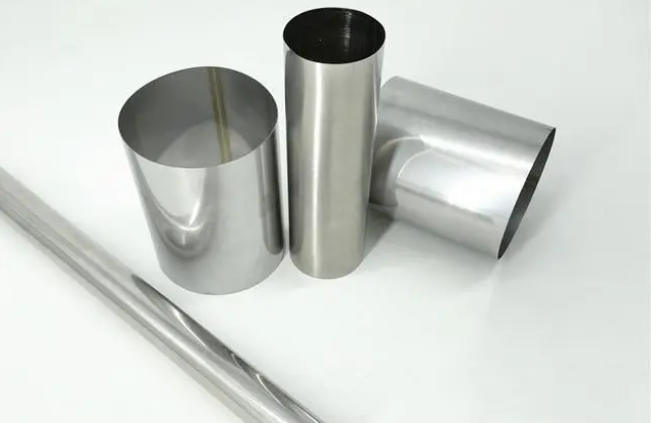How is 316 stainless steel pipe produced?
316 stainless steel pipe has good corrosion resistance and high-temperature resistance and is commonly used in chemical, food, light industry, mechanical instrumentation, and other industrial transmission pipelines as well as mechanical structural components. Then you know how the 316 stainless steel pipe manufacturer is produced? The following will take you to understand one by one.
1、Selected material
The use of cold-rolled stainless steel strips as raw materials, the surface state BA grade. Before the steel strip is used in the factory, the strip must be inspected in detail. Inspection items include thickness, width, edge quality state, appearance, and physical properties inspection. If necessary, the grain size of the original material is to be inspected, the inspection can be used for production only after passing.
2、Uncoiling
Before entering the welded pipe unit, the steel strip needs to be unrolled using the steel strip uncoiler, and the steel strip needs to be leveled by adding a leveling mechanism to ensure that the steel strip enters the forming part of the welded pipe unit in a straight state, so that the bending of the steel strip can be completed successfully.
3、Pipe billet forming
Continuous roll bending equipment is used to continuously roll bend the steel strip to make an open pipe billet. The steel strip needs to pass the introduction module, rough rolling module, closing module of the welded pipe unit several functional modules, each module uses different types of rolls to achieve the bending of different parts of the steel strip forming, and finally, the steel strip from the plane gradually bent to form an open billet, ready for welding into 304 stainless steel pipe.
4、Continuous welding
Steel strip after continuous roll forming unit, made of open pipe billet. Use TIG welding equipment, continuous welding, made of round tube. The welding process uses argon as a protective gas to prevent oxidation before the weld solidifies and cools in contact with oxygen. The argon gas is passed into the tube to protect the internal weld seam, and the argon gas passed into the torch is used to protect the tungsten electrode. Around the melt pool to form a protective layer of argon gas to protect the melt pool and the weld from oxidation.
5、Welding seam leveling
Due to the impact of welding current and gravity, resulting in the protrusion of the internal weld of stainless steel products tube, the external weld will also appear depressed, these problems will not have an impact if used in an ordinary low-pressure fluid environment. If used in high temperature, high pressure, and high-speed fluid environment, will cause problems in use. This defect must be eliminated by using special weld seam leveling equipment.
6、 Online heat treatment
Steel strips for the roll bending forming process will produce process hardening, which is not conducive to post-processing of the pipe, especially for the pipe bending process. During the welding process, there will be welding stress at the weld seam, which will cause cracking potential in the later use process, which requires heat treatment.
Currently commonly used heat treatment process for hydrogen protective atmosphere bright solution treatment, 304 stainless steel pipe heated to more than 1050 °, after a period of insulation, is the internal tissue morphology transformation, the formation of uniform austenite organization, under the protection of hydrogen atmosphere, no oxidation.
7、Sizing finishing
The outer diameter size of the welded pipe, in the welding and heat treatment process, will be deformed, resulting in the outer diameter size can not meet the requirements of use, and the need for sizing finishing. Usually used sizing and finishing unit consists of 4 sets of flat rollers and 4 sets of side rollers, flat rollers are designed as flat oval (or round), and side rollers are designed as oval (or round). The sizing amount is different according to the outer diameter and wall thickness of the tube, generally within the range of 0.20~0.50mm. After sizing and finishing, the outer diameter tolerance of the tube can be controlled within ±0.05mm, which can fully meet the accuracy requirements.
8、On-line flaw detection
Due to the pressure, and the need for a certain degree of reliability, the weld only relies on pressure detection is difficult to detect internal defects in the weld, you can use online eddy current flaw detection or ultrasonic flaw detection, real-time online 100% detection. The welding state can be corrected at any time according to the alarm information to reduce the production of substandard products.
9、Sizing cutting
Using online cut-to-length equipment, according to the length required by the customer, cut-to-length, you can use rotary cutting (chipless) technology, compared with chip cutting, chipless cutting has no cutting burr characteristics, at a later stage, you can not deburr the port.
10、Straightening
Roll forming unit production of welded pipe straightness can not meet the requirements of the use of the general straightness of such welded pipe needs to be controlled at 0.10/100mm. need to use a straightening machine to straighten the welded pipe to achieve the required production requirements.
11、Pressure test
The use of an automatic static water pressure test machine, the 304 stainless steel pipe pressure test, loading, flushing, and pressure testing, under the material, all automatically complete, pressure after a certain period of time through the differential pressure method to sort out an unqualified welded pipe.
12、Cleaning and drying
Welded pipe in the completion of mechanical processing, the need for the final cleaning and drying, to remove the inner wall or outer wall of the pipe residual coolant, oil and other pollutants, and then use for hot air drying to prevent rust during transport and storage. Finally, the finished stainless steel welded pipe inspection and packaging, you can leave the factory.
The above is the production process of 316 stainless steel pipe, the production process includes the selection of materials, uncoiling, billet forming, continuous welding, welding seam finishing and a series of processes.



